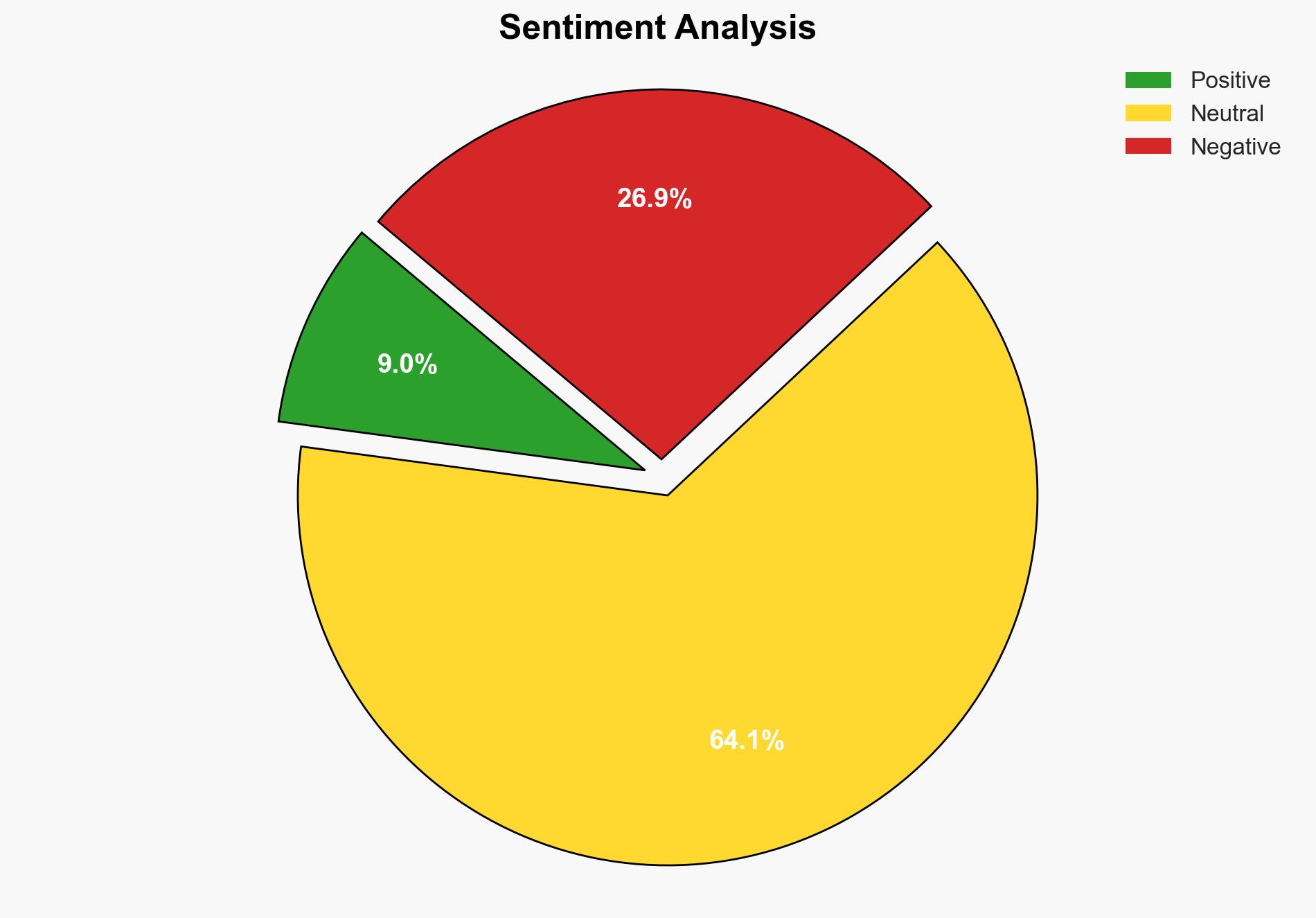Israeli strikes kill at least 10 including one UN worker in Gaza – ABC News (AU)
Published on: 2025-03-19
Intelligence Report: Israeli strikes kill at least 10 including one UN worker in Gaza – ABC News (AU)
1. BLUF (Bottom Line Up Front)
Recent Israeli military operations in Gaza have resulted in significant casualties, including the death of at least 10 individuals, among them a UN worker. The operations are part of a renewed ground initiative aimed at establishing a buffer zone between northern and southern Gaza. This escalation follows a period of relative calm under a ceasefire agreement. The situation poses immediate risks to regional stability and humanitarian conditions.
2. Detailed Analysis
The following structured analytic techniques have been applied for this analysis:
General Analysis
The Israeli military has resumed ground operations in central and southern Gaza, aiming to create a buffer zone. This move comes after a series of airstrikes that have killed multiple Palestinians, including a UN worker. The operations have been described as a response to perceived threats from militant groups such as Hamas and Islamic Jihad. The resumption of hostilities marks a significant breach of the ceasefire agreement established earlier in the year.
The strategic intent behind these operations appears to be the re-establishment of control over critical corridors and the prevention of militant activities. However, the actions have led to increased casualties and displacement among the civilian population, exacerbating the humanitarian crisis in the region.
3. Implications and Strategic Risks
The renewed military operations in Gaza carry several strategic risks. The immediate impact includes heightened tensions and potential for further escalation of violence, which could destabilize the region. The humanitarian situation is likely to deteriorate, with increased displacement and casualties among civilians. The operations may also affect international relations, particularly with entities advocating for peace and humanitarian aid.
The continuation of hostilities could lead to broader regional instability, impacting economic interests and security dynamics. The use of military force in densely populated areas raises concerns about compliance with international humanitarian law and the potential for international condemnation.
4. Recommendations and Outlook
Recommendations:
- Engage in diplomatic efforts to reinstate and strengthen the ceasefire agreement, involving international mediators to ensure compliance from all parties.
- Enhance humanitarian aid and support for displaced populations to mitigate the immediate humanitarian impact.
- Implement measures to monitor and report on compliance with international humanitarian law to prevent further civilian casualties.
Outlook:
Best-case scenario: A renewed ceasefire is established, reducing hostilities and allowing for humanitarian aid to reach affected populations.
Worst-case scenario: Escalation of conflict leads to a full-scale military engagement, resulting in significant casualties and regional instability.
Most likely scenario: Continued skirmishes and intermittent ceasefires, with ongoing humanitarian challenges and international diplomatic efforts to stabilize the situation.
5. Key Individuals and Entities
The report mentions significant individuals and organizations involved in the conflict. Notable figures include Benjamin Netanyahu and Abdel Latif Al Qanou. Key entities involved are the Israeli military, Hamas, and the United Nations.





